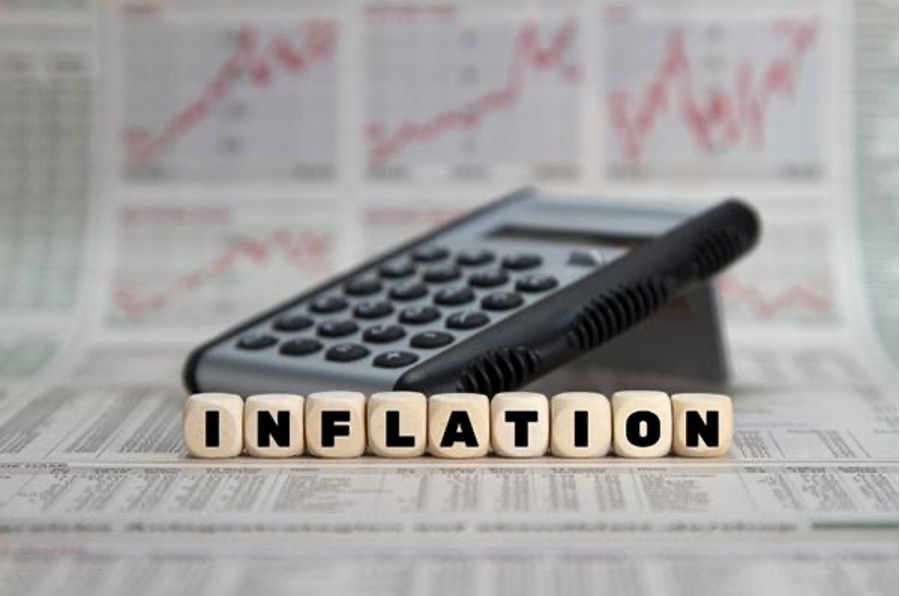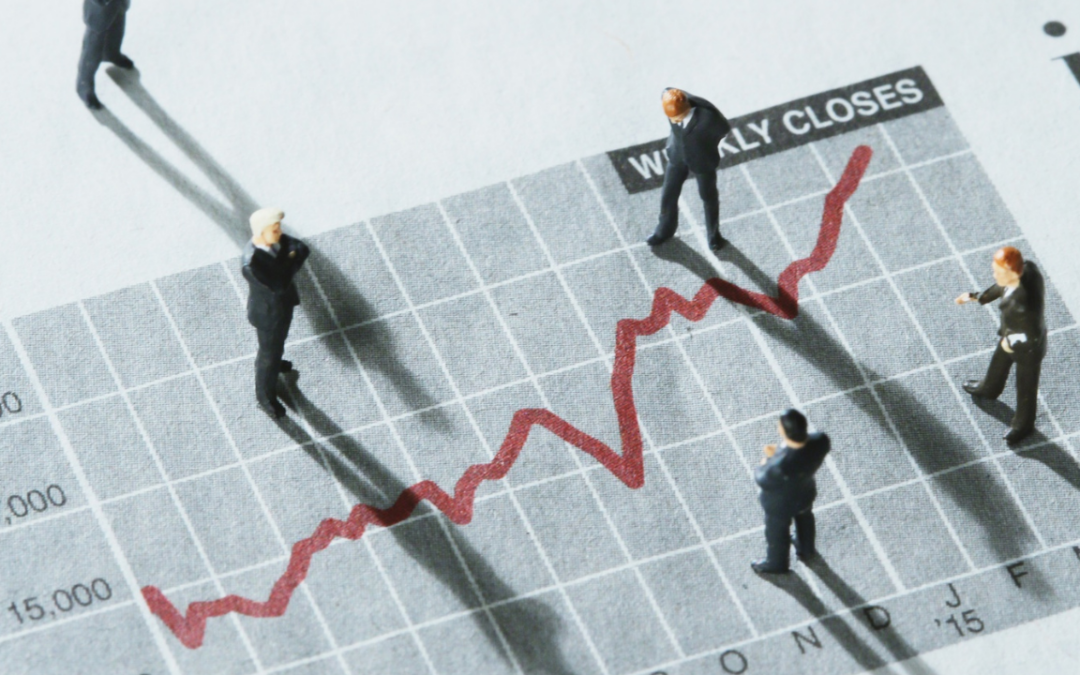By Jason Epps, CFP®, CRPC®
Although we had hopes that inflation would begin to ebb, the Federal Reserve yet again raised interest rates on June 15th by 0.75% (after U.S. inflation rates soared to 8.6% in May 2022), (1) the largest hike in a single meeting since 1994. (2) These significant measures and unnerving headlines may have you wondering: why has inflation become such a big problem recently?
The best way to understand the problem is to first look at the factors causing the rising inflation. The COVID-19 pandemic was unlike anything the world has ever seen. For the first time in our modern history, the world’s economy came to a standstill. As enigmatic as the pandemic was, it is expected that the rebound from it will also be a once-in-a-lifetime event. The bounceback isn’t being helped at all by the war in Ukraine as it affects the food supply chain and energy prices around the world. (3)
That’s not to say that the future is bleak, but rather to temper expectations so that we can properly plan for the future and mitigate potential risk. Here are some reasons why inflation has increased in the past year and what it means for your long-term purchasing power.
What Is Inflation?
According to Investopedia, inflation is a decrease in the purchasing power of money, reflected in a general increase in the prices of goods and services in an economy. (4) It can be characterized as persistent or transitory. Transitory inflation (5) is temporary and happens when supply doesn’t meet demand. If left unhandled, it can turn into persistent inflation, (6) which results in a more permanent increase in prices due to a continuous mismatch in supply and demand.
The Consumer Price Index (CPI) is a common measure of inflation. The most recent CPI report from May 2022 suggested that inflation has risen an astounding 8.6% over the past year, (7) the highest level in 40 years (8) and significantly higher than the typical 2% rise we see in an average year.
Why Is Inflation So High?
To better understand if inflation will last, let’s take a look at the factors contributing to its rise.
Devalued Dollar
When the COVID-19 pandemic first hit and millions of Americans were furloughed or laid off, drastic economic measures were taken to keep the country afloat. The U.S. government instituted expansionary monetary and fiscal policies in order to pump money back into the economy, increasing the money supply at a rapid rate. It grew 21 percent in the 12 months ending in April 2022. (9)
Though experts agree that these drastic measures were necessary to keep the economy from collapsing, they also agree that the increase in money supply devalued the dollar, meaning it takes more dollars to buy the same item since each dollar is less valuable.
This issue is further compounded by the current trade deficit, which increased by $107.9 billion, a 41.1% year-to-date increase. (10) Because the U.S. buys (imports) more than it sells (exports), a devalued dollar relative to other countries’ currencies drives the cost of imported goods up even more. It’s tempting to write these issues off as fallout from the pandemic, but the trade deficit is not a new issue. In fact, the U.S. has seen a deficit every year since 1975. (11) This indicates that the rise of inflation is not a new issue either, it’s just been sped up and exacerbated by the increase in government spending in response to the pandemic.
Supply Chain Headaches
If there’s one thing that’s been in the news even more than inflation concerns, it’s supply chain disruptions. Since the vaccine rollouts and slow return to pre-pandemic life, companies have struggled to keep up with manufacturing and distributing goods. This is because many distribution centers cut their hours when the global economy came to a halt in anticipation of a huge drop in demand for consumer goods. The drop in demand, however, did not come.
As people across the globe spent days, then weeks, then months in their houses, demand skyrocketed for exercise equipment, home goods, and office supplies. Factories increased their output, but the distribution chains have struggled to get everything where they need to be.
Additionally, the increased production has also caused a shortage in raw materials, thereby exacerbating the gap between overall supply and demand for even basic items. As demand continues to outpace supply, prices are driven higher and higher.
Labor Shortages and Increasing Wages
Continued labor shortages are another factor driving inflation. In what is being called “The Great Resignation,” millions of workers across America have quit or considered quitting their jobs as they reevaluate the role that work plays in their lives. (12) As such, many companies are finding that they have to pay higher wages in order to attract and retain employees. These increased costs often get passed through to the customer in the form of increased prices for goods and services.
The flip side of the labor shortage issue is the passage of the $15 federal minimum wage. (13) Many states are following suit with plans to increase their respective minimum wage thresholds. So even if companies weren’t paying more for labor because of the struggle to find workers, they would still be paying more due to increasing minimum wage. Again, these increased costs will be passed through to consumers, and it will be more than just a transitory change in prices since the minimum wage laws are permanent.
How Long Will Inflation Last?
It’s tough to say exactly how long inflation will last, but based on these three variables, it could be a couple years before we return to the target rate of 2%. As our global economy shifts, trade alliances change, and we experience the ongoing effects of the COVID-19 pandemic, it seems to be an issue that will persist for the foreseeable future.
Let Us Help You Protect Against Inflation
It’s understandable to be concerned about inflation. Many of us are not only worried about how inflation will impact our current finances, but also about how it will affect our long-term goals. That’s why it’s so crucial to be realistic about how long inflation could impact your financial plan.
At KFA Private Wealth Group, we have the tools and expertise to guide you through a long-term inflationary environment. We will review your investment and retirement plans for proper diversification and risk tolerance levels, ensuring you’re properly safeguarded no matter how long this increased inflation lasts. Email jepps@kfapwg.com or call 571-386-2022 to schedule an appointment.
About Jason
Jason Epps is vice president and private wealth advisor at KFA Private Wealth Group, a registered independent advisory firm founded on the premise of providing sound financial and investment advice. With over 15 years of experience, Jason possesses the unique knowledge and expertise necessary to provide his clients with the most applicable and beneficial financial guidance that helps them find confidence in their financial future. Jason is a CERTIFIED FINANCIAL PLANNER™ practitioner and a Chartered Retirement Planning Counselor℠, CRPC®, and believes that a financial plan is only as strong as the advisor’s understanding of the core values and beliefs of each client. He serves a diverse range of clients, from young accumulators to pre-retirees and retirees, including business owners and professionals in a variety of fields. Jason is passionate about giving back to his community and volunteers with various organizations in the D.C. metro area. He also has coached youth travel and AAU basketball since 2009. When he’s not working, you can find Jason spending time with friends and family, traveling, trying out new restaurants, and cheering on local D.C. sports teams. To learn more about Jason, connect with him on LinkedIn.
____________________
(2) https://finance.yahoo.com/news/fed-fomc-monetary-policy-decision-june-2022-120337242.html
(3) https://graphics.reuters.com/UKRAINE-CRISIS/FOOD/zjvqkgomjvx/
(4) https://www.investopedia.com/terms/i/inflation.asp
(5) https://finance.yahoo.com/news/inflation-transitory-persistent-210149448.html
(6) https://finance.yahoo.com/news/inflation-transitory-persistent-210149448.html
(7) https://www.bls.gov/news.release/pdf/cpi.pdf
(8) https://www.theguardian.com/business/2022/jun/10/us-inflation-rate-may-2022-four-decade-high
(9) https://www.vanguardngr.com/2022/06/inflation-money-supply-hits-n46-5-trn-highest-in-5-years/
(10) https://www.census.gov/foreign-trade/Press-Release/current_press_release/ft900.pdf
(11) https://www.thoughtco.com/history-of-the-us-balance-of-trade-1147456




